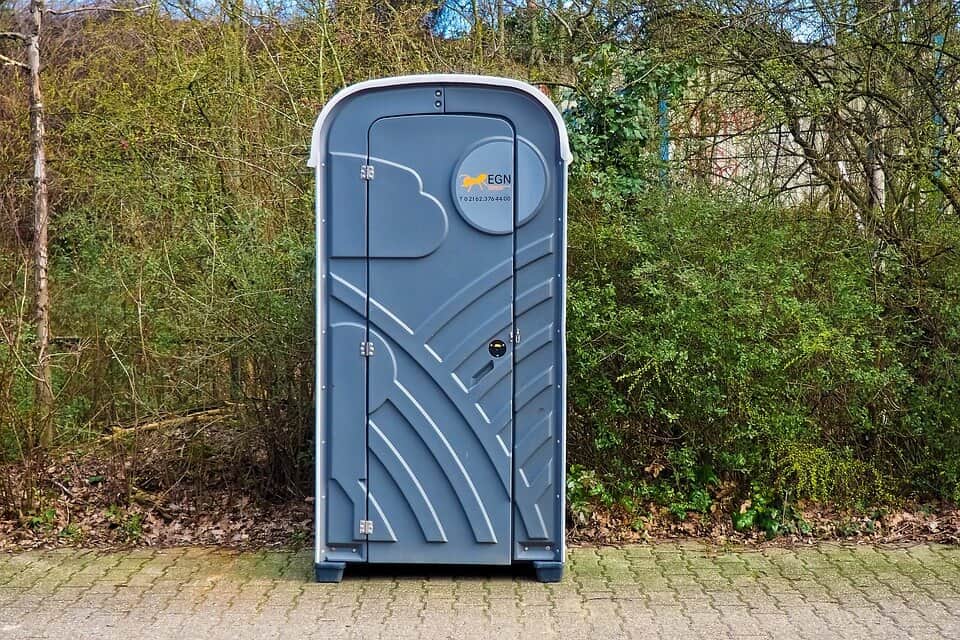I didn’t know I was claustrophobic -and maybe I wasn’t – until I got stuck in a cave. I want to go caving anyways, so I researched it and found some good tips on how to overcome it.
How to overcome claustrophobia while caving? If you’re feeling claustrophobic, take it easy. Inform the group and make sure to rest for a while. Focus on your breathing. If it helps, you can try to count your breaths. Don’t judge the feeling (tell yourself it’s okay to feel this way). Then, focus your mind on something else.
Being a claustrophobic caver sounds like a bad joke, but it can actually add a lot to the experience if you’re able to overcome it (just enough). And there are plenty of ways to do so. Read on to get some solid tips.
Quick Steps to Overcome Claustrophobia
Already stuck in a cave and no time to read the entire thing? No worries. Just try to make it to the end of this list, I dare you:
- Take it easy. Don’t push yourself and tell the group that you’re taking a moment. Try to find a relaxed spot to sit down and calm down.
- Focus on your breathing. Breathing slow and deeply will help ease your mind as well as taking your thoughts off being confined. Try to count to three on each breath.
- Mindfulness. Remind yourself: this uncomfortable feeling is produced internally, and it will pass.
- Challenge the feeling. Acknowledge the fear is not real, and constantly remind yourself of this. Undermine its authority by visualizing positive scenario’s and feelings.
- Redirect focus. Try to redirect your focus by, for example, paying attention to the people around you or the time passing. An old army trick is to memorize any eight figured number (that isn’t too easy) and constantly repeat the number mentally.
Caving isn’t always a walk in the park, it’s usually more like crawling through narrow passages, diving into dark unknown depths and getting yourself stuck in horizontal wedges, wondering if that second breakfast might’ve been a mistake. But that’s exactly what makes it so much fun to do! At least, that is, if you can fight off the claustrophobic feeling along the way.
Fun fact: claustrophobia can be cured by exposing yourself to increasingly tight spaces. This method is also called desensitization or self-exposure therapy. It’s completely safe to do so, as long as you feel safe enough and aren’t alone.
Being a claustrophobic caver might sound like a match made in hell, but it’s actually adding something to your experience. Caving is all about breaking new ground, physically and mentally. Fighting off claustrophobia in a dark cave might sound like a fairy tale, but you sure as hell don’t have to be a knight in shining armor to do so.
I encourage anyone that has claustrophobia to start caving: it’s the best way to overcome it quickly. Please don’t start out by doing caves that consist entirely out of squeezes and popcorn crawls: it won’t heal you in any way. But if you start out small, by visiting a show cave with a guided tour, and then doing a beginner cave with a couple of crawls, working your way down, you’ll definitely be able to overcome your fears.
What is Claustrophobia?
Claustrophobia is, in short, an extreme and/or irrational fear of confined spaces. Classified as an anxiety disorder, people suffering from it may experience anxiety, panic attacks, intense sweating, difficulty concentrating and have a hard time breathing when in a small space. For example, riding an elevator, climbing a stairwell or using a toilet without any windows sends shivers down the spine of someone suffering from claustrophobia.

Symptoms
- fear and panic
- chills, sweating
- dry mouth
- numbness, headaches
- chest pains
- nausea
- confusion, disorientation
- dizziness, fainting
- rapid heart rate, high blood pressure
When Could I Get Claustrophobic?
Caving is one of the most claustrophobic activities in the world, and there’s a lot of places to get anxious along the way. Luckily, not everybody gets claustrophobic from the same things, so read this list carefully to find out what challenges might lay ahead of you.
• Squeezes. Getting to see places most people don’t, means taking routes most people won’t. Squeezes are a classic example of these routes. With barely enough space to move forward and often no visible ‘light at the end of the tunnel’, squeezes are a great example where one could get claustrophobic.
• Narrow vertical or horizontal openings (or entrances). By definition, a cave is exogenous, meaning it’s deeper than it’s opening is wide. No surprise that you’ll encounter a lot of these cramped openings along the way.
• Underwater entrances. Some cave entrances are located below sea level. Here you’ll have to squeeze through an entrance while holding your breath or even carrying dive equipment.
• Chimneys. A narrow, vertical passage in the rock of a mountain.
• Cramped, dark caverns. Obviously, you are caving. Exploring large caves (or caverns) is going to be part of the deal most of the time, and being in these seemingly endless voids of darkness will be intimidating at first.
Does This Mean I Can’t Go caving?
First off, allow me to state the obvious. If the idea of wearing a turtleneck results in you having an immediate panic attack, going down a cave might not be for you. However, there are loads of caves to visit, ranging from beginner-level guided tours to expert-level solo exploring. Focusing on the fact that the latter might never be what floats your boat only results in more anxiety, so why not take a step back and sign up for a guided tour through your friendly neighborhood cave? **The best way to overcome a phobia is to confront yourself with that exact fear. There’s plenty of safe, man-made tours through stabile caves to test the waters before going pro.
Claustrophobia is a phobia, which means it’s an irrational fear. To make sure it doesn’t shit the bed on your (first) caving trip, prepare. The more prepared you are, the unlikelier a claustrophobic outburst or even panic attack.
How to Avoid Becoming Claustrophobic?
There’s so much information and tips for avoiding claustrophobia out there, just reading into it made me feel like the walls were closing in. Pretty ironic, huh? That’s why I’ve summarized all the tip’s and tricks and arranged them accordingly.
Generally
The most common form of caving is mostly above water, and as cave diving is for more experienced cavers I decided to divide the solutions in two, fitted best for each scenario.
Point 1-5 will also help you feel better if becoming claustrophobic underwater, so don’t skip it.
- Take it easy. Don’t push yourself and tell the group that you’re taking a moment. Try to find a relaxed spot to sit down and calm down.
- Focus on your breathing. Breathing slow and deeply will help ease your mind as well as taking your thoughts off being confined. Try to count to three on each breath.
- Mindfulness. Remind yourself: this uncomfortable feeling is produced internally, and it will pass.
- Challenge the feeling. Acknowledge the fear is not real, and constantly remind yourself of this. Undermine its authority by visualizing positive scenario’s and feelings.
- Redirect focus. Try to redirect your focus by, for example, paying attention to the people around you or the time passing. An old army trick is to memorize any eight figured number (that isn’t too easy) and constantly repeat the number mentally.
Underwater
If you’re getting claustrophobic while cave diving, no worries. Since cave diving is one of the most dangerous sports, and diving is just as claustrophobic as most caves, this is what gets to the best of us. To be honest, I haven’t heard of anyone diving a cave yet that didn’t make them feel at least a bit anxious. Luckily, there’s a lot of things to do to help make your cave diving experience less claustrophobic and more fun.
- Train. Make sure this isn’t your first rodeo. Before going cave diving, ensure you are an experienced diver. You know your stuff, and you’ve preferably already dived a few shipwrecks along the way.
- Pick the right mask. Experiencing claustrophobia while you’re diving is usually due to the mask divers have to wear to breathe underwater. Claustrophobia is mostly a feeling of uncomfortable confinement, and wearing a mask makes some people feel more confined. Picking a mask that is smaller than average, or made of clear plastic helps.
- Inform the group. Communicating is very limited while diving. Make sure the others in your group are informed on your claustrophobia, so they are prepared and able to assist if needed.
Related Questions
Is there medication for claustrophobia? There’s no specific drug to treat claustrophobia, but your doctor might prescribe you anti-anxiety medication. Please consult with your physician before taking medication and entering a cave.
Is claustrophobia dangerous? It can be dangerous in case you panic. This can cause irrational behavior, which creates dangerous situation. As long as you stay put and rest until you relax, it isn’t very dangerous at all.

